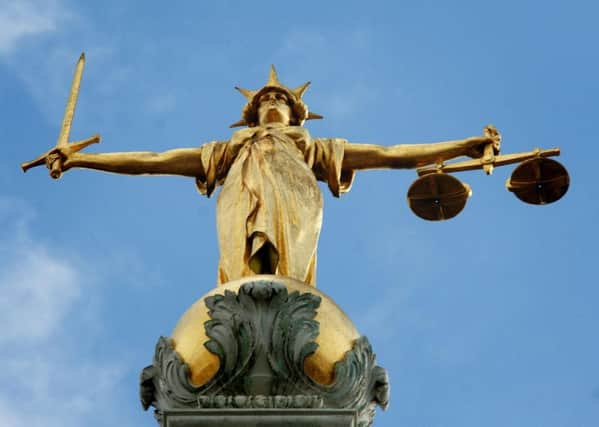Father '˜admitted shaking baby daughter'


But Dr Julie Ann Maney said a CT scan showed that the three-month-old girl sustained severe bleeding of the brain and in her experience such injuries were normally caused by either a severe road traffic collision or “violent acceleration or deceleration, such as shaking’’.
The consultant paediatrician was giving evidence on the second day of the trial at Craigavon Crown Court, sitting in Armagh, of a west Belfast man accused of murdering Caragh Walsh almost three years ago.
Advertisement
Hide AdAdvertisement
Hide AdChristopher O’Neill, 26, from Whiterock Road, denies murdering his infant daughter who died on February 7, 2014, two days after being rushed to the Royal Belfast Hospital for Sick Children from her Glasveigh Park home in Twinbrook.
It was suggested to the jury on the opening day of the trial by prosecution counsel Toby Hedworth QC that a reason for the baby’s death was that “perhaps he, (O’Neill) had snapped because she was crying and he could not get her to settle, only he knows that”.
But Mr Hedworth said it was not suggested that O’Neill intended to kill his baby daughter, but that being unable to quieten her, he “must have lost self-control and that he caused those catalogue of injuries identified by the pathologists”.
Dr Maney told the trial that on February 5, 2014, the hospital had been alerted that a paramedic crew was on its way with a three-month-old baby girl who was in cardiac arrest.
Advertisement
Hide AdAdvertisement
Hide AdWhen the ambulance arrived at the hospital doors, it was met by Dr Maney and her highly trained team who rushed baby Caragh in for emergency treatment.
She told the jury of 10 men and two women: “At this point we took over her airways. She had agonising breathing. Her breathing was not sufficient to sustain her life.
“She needed assisted breathing. She had no heart rate. She was effectively dead.’’
The consultant paediatrician said that as a result “time was of the essence’’ and her team of experts set about trying to save baby Caragh’s life.
Advertisement
Hide AdAdvertisement
Hide AdThe doctor told trial judge Madam Justice McBride that a needle was inserted into the infant’s bloodstream through the bone marrow in her shin bone with “life saving medication to restart her heart”.
She added: “That’s the central circulation of the body to reach the heart and other parts of the body very, very quickly.
“We also gave her a strong course of antibiotics to prevent any infections along with intravenous fluids to support her circulation, her outcome and her survival.
“At 12.43 pm her heart was resuscitated. We started to feel pulses in her groin. We listened to her heart. She had heart sounds and the chest compressions were discontinued. Her cardio vascular system was responding.”
Advertisement
Hide AdAdvertisement
Hide AdAsked by prosecution counsel Toby Hedworth QC if baby Caraagh was stabilised at that stage, Dr Maney replied: “I would say her rate had come back.
“We had taken over her breathing but she was still gravely ill. We needed to support her breathing and give her constant care and support on a life support machine. An anaethetist inserted a tube from her mouth to her lungs.’’
Dr Maney said that when she spoke to Mr O’Neill about what happened he said that “Caragh had been sitting in her wee bouncer ... she was crying and crying constantly. She had stopped breathing and he shook her’’.
The consultant continued: “I asked him ‘what do you mean shook her?’ He said: ‘A wee bit to bring her round’ or words to that effect.
Advertisement
Hide AdAdvertisement
Hide Ad“He said he tried to feed her and put a bottle in her mouth. He also said he blew in her mouth and phoned 999.’’
The court heard that in the days before, the infant had been seen by her GP as the family felt she may have been constipated but the doctor could find nothing wrong with her.
Dr Maney said she took members of the family separately into a room to tell them that “everything that could be done is being done to save her life’’.
“I told them from my experience Caragh was extremely unwell, she was gravely ill and that she might die.’’
Advertisement
Hide AdAdvertisement
Hide AdDr Maney said that she received the results of the CT scan which showed that Caragh had sustained a number of subdural haemorrhages to the brain.
She told the jury: “She had sustained a severe traumatic brain injury. This is not a normal finding in a child of this age and this gave me cause for concern.
“I have worked in the emergency department and I have seen severe traumatic brain injuries of children involved in road traffic collisions ... or violent acceleration and deceleration such as shaking.
“I asked how those injuries had been caused and Mr O’Neill said: ‘I shook her that’s why’.”
Advertisement
Hide AdAdvertisement
Hide AdAsked by prosecution counsel Toby Hedworth QC how the injuries had been caused to Caragh Walsh, Dr Maney replied: “She had been violentley shaken and the injuries sustained subsequently caused her death.’’
Under cross-examination from defence counsel Paddy Little QC, the consultant paediatrician said that she did not notice any marks on the baby when she was admitted.
Added Dr Maney: “Caragh was beautiful. She was well nourished and well kept. She was beautiful.’’
At hearing.